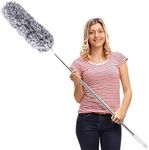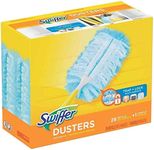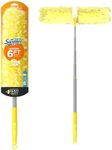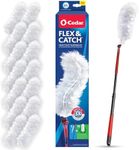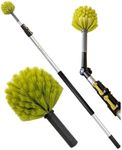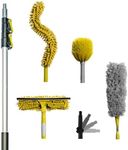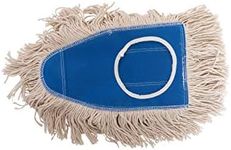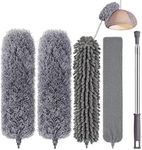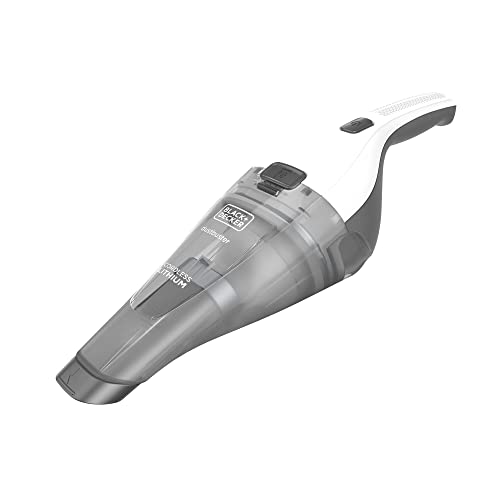Buying Guide for the Best dusters
Choosing the right duster can make cleaning much easier and more effective. Dusters come in various types and materials, each suited for different cleaning tasks and surfaces. When picking a duster, think about where and how you plan to use it—whether it’s for delicate surfaces, hard-to-reach places, or general dusting around the house. Understanding the key features will help you select a duster that fits your needs and makes your cleaning routine more efficient.MaterialThe material of a duster determines how well it picks up and holds dust. Common materials include microfiber, feather, lambswool, and synthetic fibers. Microfiber is great for trapping dust and allergens, making it ideal for most surfaces. Feather dusters are gentle and good for delicate items, but may just move dust around if not used properly. Lambswool dusters attract dust naturally and are good for wood surfaces. Synthetic dusters are often more durable and can be used for a variety of tasks. To choose the right material, consider the surfaces you’ll be cleaning and whether you need something gentle or more heavy-duty.
Handle LengthHandle length affects how easily you can reach high or awkward spots. Short handles are best for close-up dusting, like shelves or electronics, while extendable or long handles help you reach ceiling fans, tall furniture, or corners. If you have high ceilings or want to avoid using a step stool, an extendable handle is a good choice. For everyday dusting of accessible surfaces, a shorter handle is usually more comfortable and easier to control.
WashabilitySome dusters are washable and reusable, while others are designed to be disposable. Washable dusters, like those made from microfiber or lambswool, can be cleaned and used many times, making them more eco-friendly and cost-effective in the long run. Disposable dusters are convenient for quick cleanups or for people with allergies who want to avoid handling dust. If you prefer a low-maintenance option, look for dusters that can be easily washed and dried.
FlexibilityFlexibility refers to how easily the duster can bend or adjust to clean around objects or in tight spaces. Some dusters have bendable heads or flexible handles, which are useful for cleaning behind appliances, around corners, or on top of cabinets. If you have a lot of hard-to-reach or oddly shaped areas to clean, a flexible duster can save you time and effort. For straightforward surfaces, flexibility may be less important.
Static ChargeCertain dusters, especially those made from synthetic materials, can build up a static charge that helps attract and hold dust. This feature is useful for cleaning electronics or surfaces where dust tends to cling. If you often clean screens, keyboards, or other static-prone items, a duster with static charge properties can be very effective. For general dusting, this feature is a nice bonus but not always necessary.



